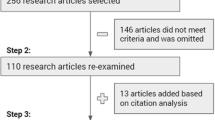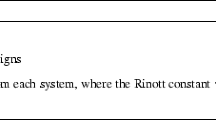Abstract
Enterprise models cover all aspects of modern enterprises, from accounting, through management of custom orders and invoicing, to operational data such as records on machines and workers. In other words, all data necessary for running the company are available in enterprise models. However, these data are not in the proper format for some tasks such as scheduling and optimization. Namely, the concepts and terminology used in enterprise models are different from what is traditionally used in scheduling and optimization software. This paper deals with the automated translation of data from the enterprise model to a scheduling model and back. In particular, we describe how to extract data from the enterprise model for solving the scheduling problem using constraint-based solvers.
Similar content being viewed by others
References
Barták, R., Čepek, O., & Surynek, P. (2007). Modelling alternatives in temporal networks. In Proceedings of the 2007 IEEE Symposium on Computational Intelligence in Scheduling, CI-Sched 2007 (pp. 129–136). IEEE Press.
Carchrae T., Beck J.C.: Applying machine learning to low knowledge control of optimization algorithms. Computational Intelligence 21(4), 372–387 (2005)
EMPOSME Translation Model, 4C. (2007). Retrieved February 27, 2008 from http://4c.ucc.ie/web/projects/empo/.
Horling, B., Leader, V., Vincent, R., Wagner, T., Raja, A., Zhang, S., et al. (1999). The TAEMS white paper, University of Massachusetts. Retrieved February 27, 2008 from http://mas.cs.umass.edu/pub/paper_detail.php/182.
ILOG OPL Studio, ILOG. (2007). Retrieved February 27, 2008 from http://www.ilog.com/products/oplstudio/.
Kovács, A., & Váncza, J. (2006). Progressive solutions: A simple but efficient dominance rule for practical RCPSP. In Proceedings of CPAIOR 2006, the 3rd International Conference on Integration of AI and OR Techniques in Constraint Programming for Combinatorial Optimization Problems (pp. 139–151). LNCS 3990, Springer Verlag.
Nuijten, W., Bousonville, T., Focacci, F., Godard, D., & Le Pape, C. (2003). MaScLib: Problem description and test bed design. Retrieved February 27, 2008 from http://www2.ilog.com/masclib/.
SICStus Prolog 4.0.2, SICS. (2007). Retrieved Februaly 27, 2008 from http://www.sics.se/sicstus.
Vilím, P. (2003). Computing explanations for global scheduling constraints. In Principles and Practice of Constraint Programming, CP2003 (p. 1000). LNCS 2833, Springer Verlag.
Author information
Authors and Affiliations
Corresponding author
Rights and permissions
About this article
Cite this article
Barták, R., Little, J., Manzano, O. et al. From enterprise models to scheduling models: bridging the gap. J Intell Manuf 21, 121–132 (2010). https://doi.org/10.1007/s10845-008-0166-5
Received:
Accepted:
Published:
Issue Date:
DOI: https://doi.org/10.1007/s10845-008-0166-5




